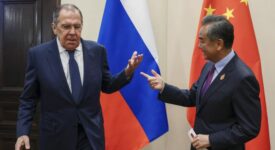Six years after the onset of the financial crisis that began with the fall of the Lehman Brothers, it becomes increasingly obvious that for the European Union the crisis is far from over. All agree that Europe’s recovery is slow, sluggish, and unstable – just like the first steps of a baby that is trying to stand on its feet. With every little disturbance, it falls down on its knees. Current international developments only confirm the fragility and vulnerability of the EU’s economic health.
Europe hoped that this time it could come back on track with the help of export-led policies. Surprisingly, “competitiveness to boost exports” – the classics of mainstream economic theory – is as vivid today as during its salad days. In fact, most of the emerging countries including the Asian tigers, BRICS or Turkey have grown like that. Europe believed that its “grown-up” neighbors would now be eager to absorb its fancy cars of German make, tasty delights from sunny Member States or luxury goods from the continent’s meccas of fashion. Perhaps, everything would have gone that way if it were not for serious geopolitical question marks endangering the economic welfare.
The Russian ban on Polish apples and the subsequent embargo on most fruits and vegetables from the European Union were but a messenger of the problematic demand from external markets, although it was perceived by many as the sole driver of Europe’s slumbering growth. The truth is that the failure of the European export-driven recovery seems to be an outcome of – perhaps coincidental – simultaneous occurrence of a number of negative geopolitical, purely political and economic issues, across the EU’s most important neighboring markets.
The Ukrainian crisis began in November 2013 and if it had not been for the recent crash of the Malaysian Airlines plane that killed almost 300 civilians, it is not sure whether Brussels would have been willing to introduce the next phase of economic sanctions that in turn triggered Moscow’s retaliatory action. Ironically, the biggest impact of the Russian ban on imports comes only nine months after the beginning of the crisis, and unfortunately at the same time when the demand from Turkey is slowing down and when the sustainability of the U.S. economic recovery is far from certain. The latest statistics demonstrates that all eurozone countries but Germany stopped growing in the second quarter of this year while exports from all eighteen eurozone members fell by half a percent in June compared to May.
Indeed, exports have been the recipe for growth all around the emerging world together with a greater accessibility of credit and a reduction of labor costs. What happens though when everybody starts rushing with exports, if everybody reduces labor costs and if everybody makes credit easier? Some economists have tended to be skeptical about the export-led growth due to the possibility that the way to economic welfare simply gets too crowded. Yet, not only the popularity of the export-to-grow approach but currently also the alarming crisis situation across the EU-neighboring countries both demonstrate that Europe will have to soon find another, or at least complementary, way to grow.
East of the Schengen border, Europe has to face the crisis in Ukraine, consequences of its own sanctions, and retaliatory Russia. In the south-east, there is Turkey whose demand is on decline and a form of Ottomanism on rise. What’s more, the EU’s 5th most important export market and a potential EU Member State has a direct border with Syria and Iraq, likely two greatest security calamities of this decade. In the south, Europe faces North African states, which have not succeeded to fully recover from the repercussions of the Arab Spring. On the top of that, migrants and refugees seek ways to get in from all of these directions. Across the Atlantic, on the other hand, Europe encounters the United States, whose intentions and sincerity to “help out” remain unclear and vague for the most part.
The times when export-driven growth was a bulletproof policy to ensure economic welfare are apparently over. Not only because the pool of those who rely on these policies has gotten more crowded but also because the situation of those who would be willing to absorb Europe’s goods has changed and mostly for worse. Even though Europe might still find space for its exports in Asia, focusing too much on the growth from outside might cause one to neglect their most important market: the domestic one.







